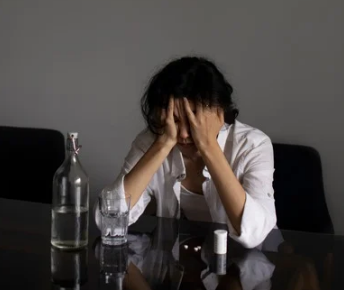Under fluorescent hospital lights, it began as a miracle. A clear liquid, once celebrated for its ability to silence unbearable pain, to ease the brain out of suffering and into stillness. Ketamine, also known on the streets as Vitamin K, was designed to heal. But like many medical marvels, it didn’t stay inside the sterile walls of hospitals for long. Across nightclubs in London, the underground scenes of Hong Kong, and the quieter corners of the Middle East, ketamine abuse has become a growing storm — one built not on prescription pills, but on a substance once intended to soothe.
A Drug with a Double Face
Ketamine drug uses began in the 1960s as an anesthetic. It was used on soldiers during war, in emergency surgeries, and in hospitals across the world. Unlike other sedatives, ketamine injection uses didn’t slow breathing, making it invaluable for trauma cases.
Today, its medical use has expanded to ketamine therapy, where low doses are administered to treat severe depression and PTSD, often when other medications have failed. Many hail it as revolutionary. But with every revolution comes a risk.
In the wrong hands, outside clinical settings, ketamine’s dissociative effects create a trance-like state — detached from reality, heavy yet euphoric. It’s why what was once medicine is now a common sight in raves and clubs.
The Shadow Beyond the High
Ketamine abuse doesn’t look like a Hollywood overdose scene. There’s no immediate collapse, no dramatic gasping for air. Instead, it slips into lives quietly. What begins as recreational use becomes dependence — a weekend experiment turning into weekday necessity.
Ketamine overdose can lead to dangerously slowed heart rate, loss of consciousness, and respiratory distress. Users often underestimate its potency, especially when mixed with alcohol or other drugs, leading to blackouts, psychosis, or worse.
In Hong Kong, ketamine is often referred to as “K powder,” inhaled or snorted in club scenes. In the UK, it’s slipped into university parties. In parts of the Middle East, its presence is quieter, buried under stigma and fear. But it’s there — moving silently through borders and veins.
What Ketamine Abuse Does to the Brain
Unlike many drugs that target dopamine, ketamine acts on glutamate — the brain’s most abundant excitatory neurotransmitter. It blocks NMDA receptors, creating a dissociative, dreamlike state. For some, this feels like floating. For others, like slipping out of their own body.
Over time, chronic ketamine abuse can damage memory, emotional regulation, and the ability to concentrate. Many long-term users describe feeling like they’re “watching their life from outside a glass wall.”
Worse, ketamine’s impact isn’t limited to the mind. It can cause bladder damage, nerve pain, and a host of neurological issues that linger long after the high fades.
A Global Pattern of Ketamine Abuse
United Kingdom
The UK has seen a sharp increase in ketamine addiction, particularly among young adults. Club culture normalized casual use, but as dependency grows, more individuals are seeking addiction treatment center support. Hospital admissions linked to ketamine overdose have doubled in the last decade.
Middle East
In the Middle East, drug addiction carries a heavy stigma. Ketamine is less visible, but its use is on the rise, often among wealthier youth in underground spaces. The lack of open conversation around ketamine abuse makes it harder for people to seek help.
Hong Kong
Hong Kong was one of the first regions in Asia to sound the alarm. Teenagers and young adults turned to ketamine for its short, intense high. Over time, public health systems have had to adapt — focusing on early intervention and harm reduction strategies.
The Thin Line Between Therapy and Addiction
Ketamine treatment for depression has changed countless lives. It can provide rapid relief for people who have suffered for years. But it requires strict medical supervision, carefully controlled dosages, and ongoing support.
When taken without these guardrails, the same compound can lead to dependency and damage. That’s why experts emphasize education, regulation, and accessible addiction treatment center programs to bridge the gap between medicine and misuse.
The Long Road Back
Breaking free from ketamine abuse isn’t simple. It often involves psychological support, behavioral therapy, and in some cases, medical detox. But more than anything, it involves breaking the silence.
Communities that once turned away from conversations about drug addiction are slowly beginning to face the reality — that ketamine isn’t just a party drug and can lead to ketamine abuse. It’s a substance with the power to heal and to harm, depending on whose hands it’s in.
Frequently Asked Questions
1. Is Ketamine therapy too risky?
When administered by medical professionals, ketamine therapy is generally safe. The risks arise when used recreationally without supervision, which can lead to ketamine abuse and long-term damage.
2. What does ket do to the brain?
Ketamine acts on NMDA receptors, altering glutamate activity. It induces a dissociative state and, with chronic use, can impair memory, mood regulation, and cognitive functioning.
3. Are ketamines used for depression?
Yes. Ketamine treatment is used for treatment-resistant depression and PTSD. Its effects are rapid but require careful monitoring.
4. Can ket damage nerves?
Yes. Prolonged ketamine abuse can lead to neurological issues, bladder problems, and nerve pain that may persist even after quitting.
5. How can Samarpan help?
At Samarpan Recovery Centre, Asia’s leading rehab facility, we have seen a sharp increase in cases related to ketamine addiction, reflecting the growing global concern over the misuse of this drug. Originally developed for medical purposes, ketamine — also known as vitamin K — was widely used as an anaesthetic and is now sometimes used in ketamine therapy for treatment-resistant depression. However, when misused outside medical supervision, its ketamine drug uses can lead to dangerous patterns of dependency, severe psychological effects, and even life-threatening consequences such as ketamine overdose.
Many individuals begin using ketamine recreationally without realising how quickly tolerance and dependence can develop. Prolonged or heavy use can lead to memory impairment, bladder damage, and severe mood instability. People often seek ketamine injection uses or recreational forms without fully understanding ketamine uses and side effects, putting their mental and physical health at serious risk.
At Samarpan, we provide evidence-based treatment for individuals struggling with ketamine abuse and drug addiction, combining medical detox with psychological support to address both the dependency and its underlying causes. Our holistic ketamine addiction treatment includes trauma-informed therapy, relapse prevention strategies, and ongoing recovery support, all delivered in a structured and compassionate environment. As Asia’s leading addiction treatment center, Samarpan offers a safe and highly specialised approach to treating ketamine misuse, helping individuals break free from addiction and rebuild their lives with stability, clarity, and lasting resilience.























 Yes, many offer serene environments and solid therapeutic frameworks. However, quality varies, so it’s essential to research accreditation, staff credentials, and therapeutic depth.
Yes, many offer serene environments and solid therapeutic frameworks. However, quality varies, so it’s essential to research accreditation, staff credentials, and therapeutic depth.




